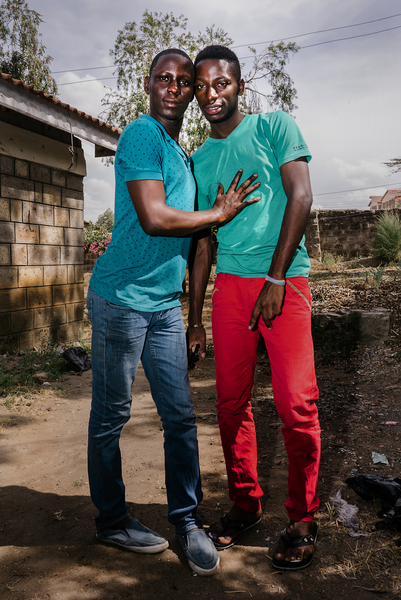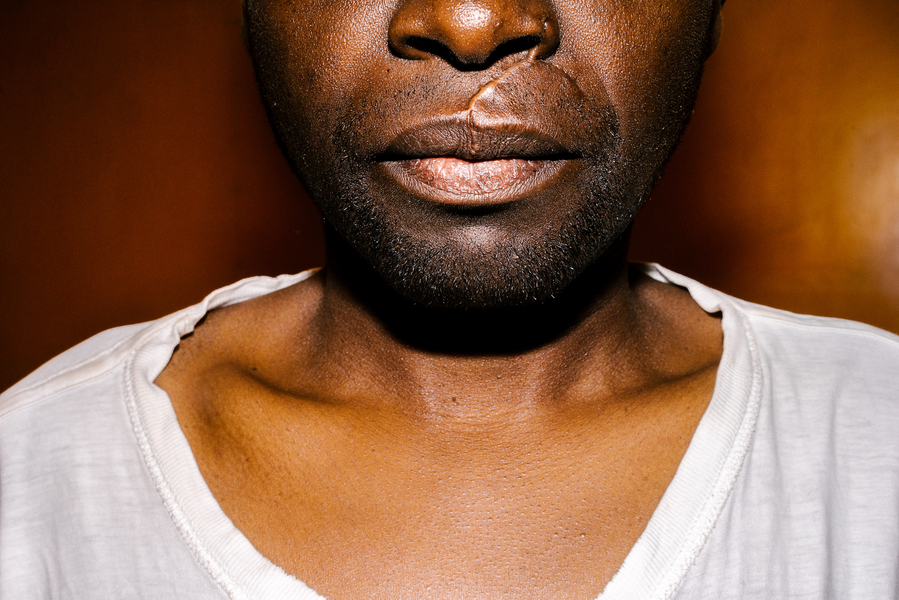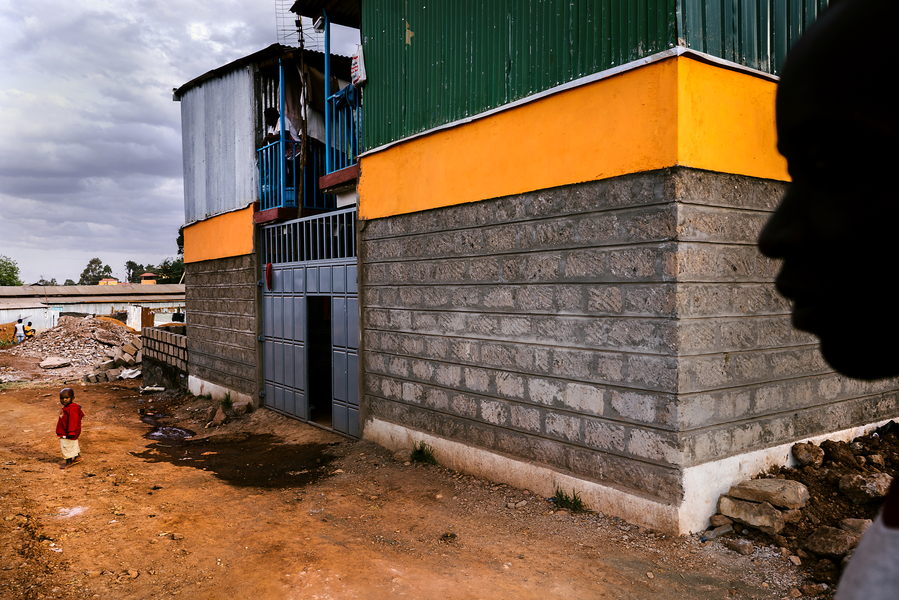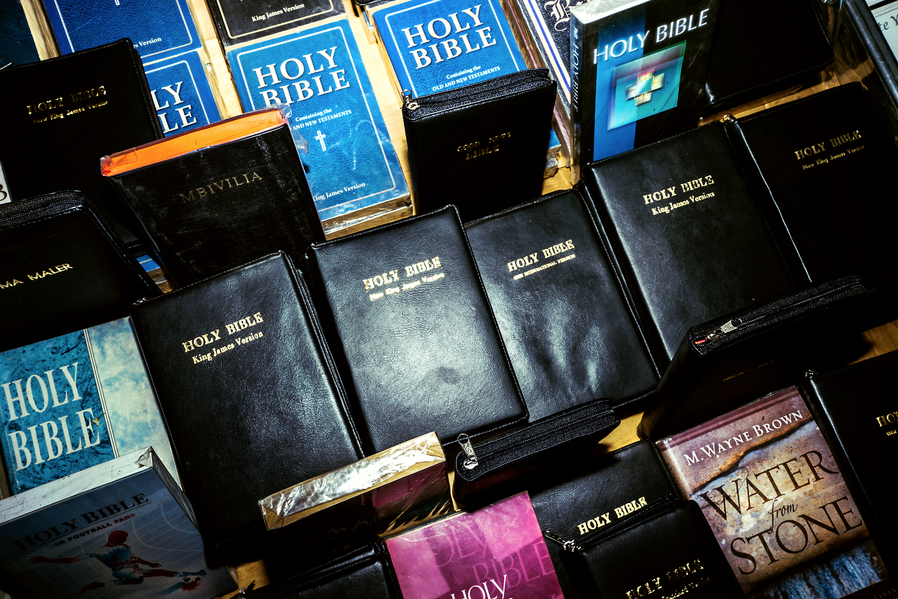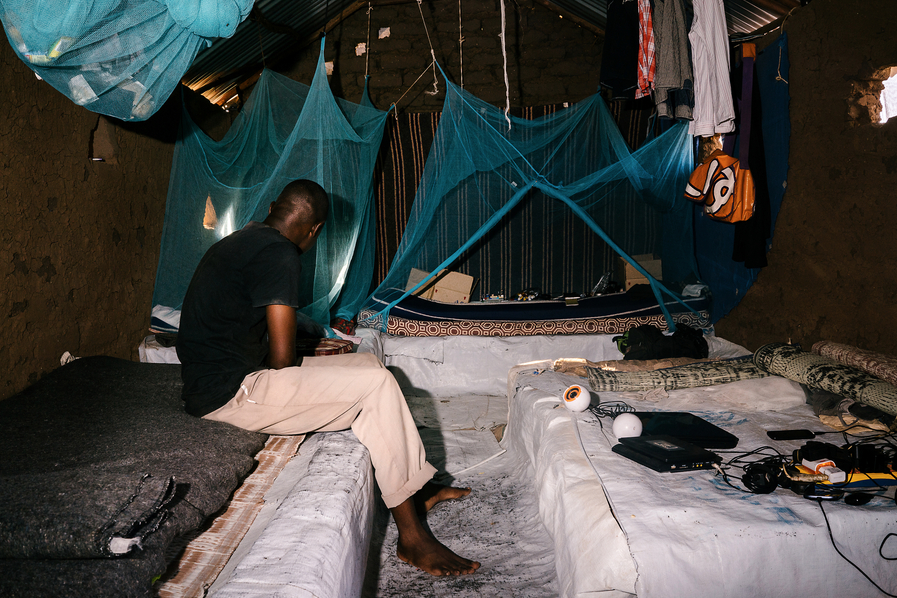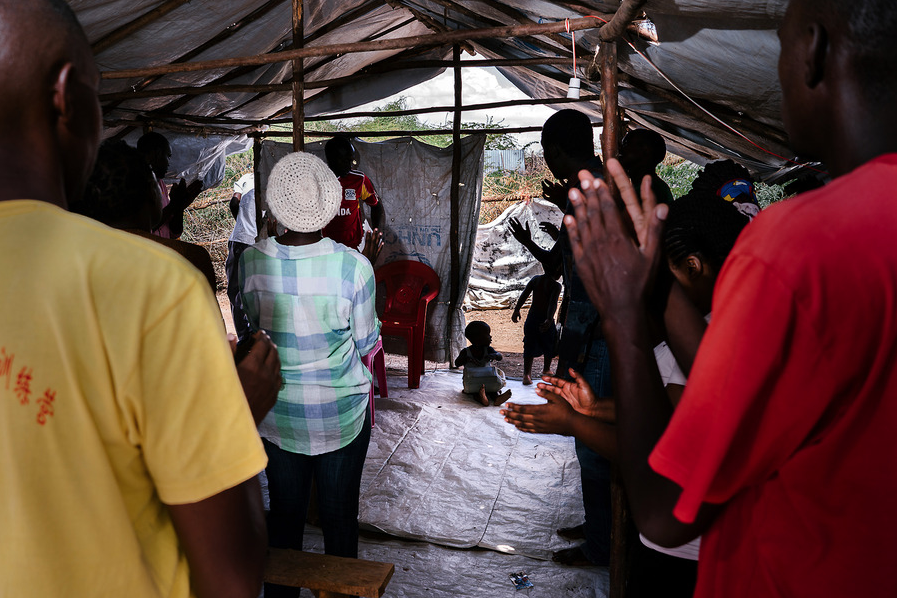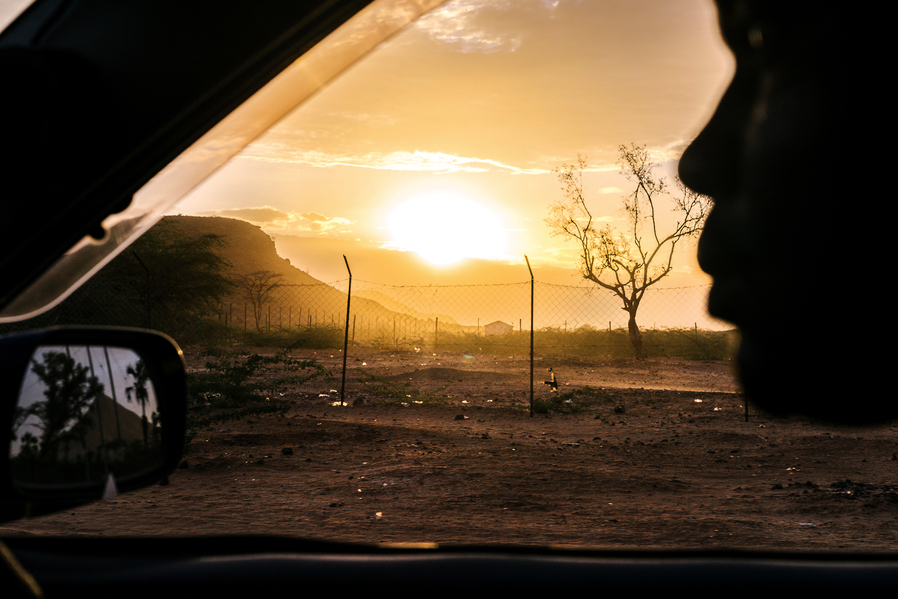Q&A: Jake Naughton
By Jess T. Dugan | April 21, 2016
Jake Naughton is a journalist working frequently on stories about LGBT and immigration issues. He is a frequent contributor to The New York Times. Additional clients include Al Jazeera America, Newsweek, The Atlantic, Education Week, The Global Post and The MasterCard Foundation.
He received his Master's degree from the CUNY Graduate School of Journalism, has been a photo intern at The New York Times and was a participant in LOOKBetween. He is a founding member of the creative cooperative Black Box.
Jess T. Dugan: I want to focus on your photographs of LGBTQ refugees and asylum seekers. The work you are making is so important and the subject is so prescient, yet many people in more liberal countries seem unaware how severe the situation is for LGBTQ people throughout the world. How did you begin making this work, and what drew you to it initially?
Jake Naughton: Yeah, I’m often surprised by how few people, allies and LGBTQ folks included, seem to realize that even though same sex marriage might have been legalized here, incredible hardships persist for LGBTQ people around the world (and all over the U.S.). Certainly that doesn’t represent everyone, but it has been shocking to hear from well-meaning folks that they thought everything was fine for the LGBTQ community now that we could all get married.
But getting to your question, this project sort of came to me. I do a lot of work around LGBTQ issues and also work about immigration issues, and am especially interested in making work about where those issues intersect, as they did in a story I wrote about the abuse of transgender detainees in American immigrant detention.
I studied abroad in Kenya in college and have traveled back to Kenya a number of times to work on a variety of stories since then. I had written a proposal a few years back about LGBT refugees in Kenya that got shelved, but then out of the blue a writer friend I went to college with wrote me early last year. He said he had gotten a fellowship to cover LGBT refugees in Kenya and was wondering if I would be interested in working with him on it. Of course I said yes, and after a few months of figuring out the details I made my first trip to Kenya, followed shortly by a second one.
My aim with Dual Shadows (and other work) is to draw greater attention to the twin struggles people who are both LGBTQ-identifying and immigrants in places that may not be equipped to handle either, let alone both.
Cynthia is a lesbian activist and refugee from Burundi. She fled her country after authorities found out she was gay. They beat her and cut her with machetes. Here, she lays in bed with her Kenyan girlfriend in the apartment the two shared in Nairobi, Kenya (though they have since moved).
JTD: Many of the people you have photographed are in hiding, or are unable to reveal their identities for various reasons. Obviously, this is at odds with the very visual nature of photography. How do you negotiate this tension in your photographs and with your subjects, for whom being photographed might be a risky undertaking?
JN: Balancing my subjects’ safety with the desire to make an aesthetically strong image that also reveals something about both the person in the image and the situation they are in — that was the central challenge of this project, and it pushed me to make images I might not have otherwise. Every image in the project is the product of a discussion with the people in my images about what they feel comfortable revealing, what is at stake and how we can collaboratively mitigate any risks, whether that means hiding their face, using a pseudonym or something else. And every decision is open to being changed down the road if the subject chooses (both to reveal more, or to reveal less). Safety is paramount because the stakes are literally life and death. But in spite of or because of those challenges, the images are powerfully visual. It was about finding a solution that worked for everyone.
A gay, HIV+ refugee from Uganda poses for a portrait outside his home. He lived in a house with dozens of other LGBT refugees from Uganda just outside of Nairobi. As a refugee, he receives a small stipend each month from the NGO Hias, but it is hard to make ends meet and he often lacks sufficient food for his anti-retrovirals.
JTD: What were some challenges of making this work, both logistically and also emotionally?
JN: This work took and continues to take a powerful toll on me. As a gay man in 2016, I’ve long felt divorced from the struggles of the LGBTQ community a generation ago. My uncle was gay, and I remember the stories my mom would tell me about the times they would go out and the abuse he endured. That’s never been my experience as a (white) gay man in America.
But the police raids, street harassment and brutal violence they knew are writ large in the lives of these refugees. I’ve worked on many difficult stories as a journalist: about miserable access to reproductive health in Liberia and South Africa, or human rights abuses in immigrant detention here in America and the enduring effects of crushing poverty on every aspect of life. And yet, seeing the way the people in my images suffered and continue to suffer for the simple fact of who and how they love —people that, but for a twist of fate, could be me — was very hard to witness. I’m still in touch with most of them, and months after I’ve come and gone their hardship endures.
Cynthia displays a scar she received at the hands of Burundian police when they attacked her because of her sexuality.
JTD: I had the opportunity to visit Kraków, Poland last spring to speak at the first transgender festival to ever be held there. Even in Kraków, which is safer than the countries where you are photographing, I was struck by my own privilege as a queer person living in America. Though we still have a ways to go here, it was a powerful reminder to me of the progress that has been made by activists who came before me. Could you expand upon how your identity affects your work and your relationships with your subjects?
JN: American privilege on every level is impossible to ignore in Kenya, and pretty much everywhere else I’ve worked in Africa. It can be seen in issues of class, race, and culture and it certainly carries over to my queerness. Broadly speaking, the chances that a queer person will be murdered or attacked are small in America. I’m not minimizing the very real risks and instances of anti-LGBTQ violence that persist in the U.S., but the scale and pervasiveness of anti-LGBTQ sentiment in Kenya (and the region) is orders of magnitude more intense, and by some accounts growing.
That said, my identity as a gay person certainly forged an initial connection with my subjects that led to intimate photographs. In my subjects there was an implicit trust that I understood the stakes, which led to deeper connections and resulting images than might have been possible otherwise.
Cynthia and S. at Cynthia's apartment.
JTD: You have spoken of this project as a larger undertaking in that you want to photograph people throughout the entire process of seeking asylum, from their home countries such as Uganda, Somalia, Ethiopia, Congo, and Rwanda to temporary refugee camps, such as Kenya, and eventually to the United States or Europe, hopefully. What is your vision for this work and what effect do you hope it has?
The work in Kenya represents one chapter of what I envision as a three-part project. For the LGBTQ refugees in my images here, Kenya is purgatory. It’s where you go after fleeing the hell of your homeland, but before you reach the (perceived) paradise of the West. I’ve since started photographing refugees as they get resettled here in America, most of whom I met while they were in Kenya but on a few occasions we were only connected once they arrived here. For them, as is often the case, the reality of their salvation is more complicated than it first appeared. The United States is a hard place for immigrants of any kind, and not everywhere is as LGBTQ friendly as New York City or San Francisco, as they soon learn. But also coming here brings incredible homesickness, not for Kenya but for their original countries of origin. Uganda, or Ethiopia or Congo are their homes, despite the suffering they endured there.
And so, I also plan to go to the places they initially fled and document the embattled LGBT communities there.
Once completed, the project will be a record of forced migration of an LGBT community unlike any other that I know of. As a journalist, I’m not an activist or an advocate. Obviously, I feel very strongly that what is happening to these people is terrible but I also don’t see it as my duty to lobby elected officials or encourage change on other levels — that’s for someone else to do. That said, I want the project to exist as a document of the hardship that still is a fact of life for so many LGBTQ-identifying people around the world. That’s my role.
S., a lesbian refugee from Uganda, lives in a protected compound in the Kakuma Refugee Camp in Kenya with dozens of other LGBT refugees. A few of the women in the compound have children, and here, all six kids stand in one of mud-hut homes the refugees share.
JTD: What reactions have you had to the work thus far?
JN: The reaction has been really positive. The work ran in Vice Magazine as part of a long feature written by friend and partner in the project, Jacob Kushner, and TIME’s Lightbox also featured the work. I’m in conversations with a number of potential partners to continue to get the work out in the world, and would welcome anyone interested to drop me a line. Overall, it’s my hope to have the work be seen as widely and by as diverse an audience as possible.
JTD: The people in your photographs have been through immense struggle and often live in constant fear for their lives. How do you handle the responsibility, and also privilege in a way, of being allowed to document and portray their struggles?
JN: That’s the central question for a journalist. Being given intimate access into another person’s lived experiences is such a profound privilege and comes with enormous responsibility to represent that experience as accurately and as fairly as possible. With this project, the stakes are higher, but the job is the same as it is with any story.
JTD: What are you most energized or motivated by right now? What's on the horizon for you as an artist?
JN: As I mentioned, I’m working on the American side of the project now. Also, this project represented a new aesthetic direction for me, introducing a strobe, which was conceptually important but also a really fun way to work. I’m incorporating it more into my practice, which has been very exciting. Also, the creative cooperative I co-founded, Black Box, is hard at work on our second project together. In general, trying to find new ways of creating and presenting my work always keeps me motivated.
All images © Jake Naughton





